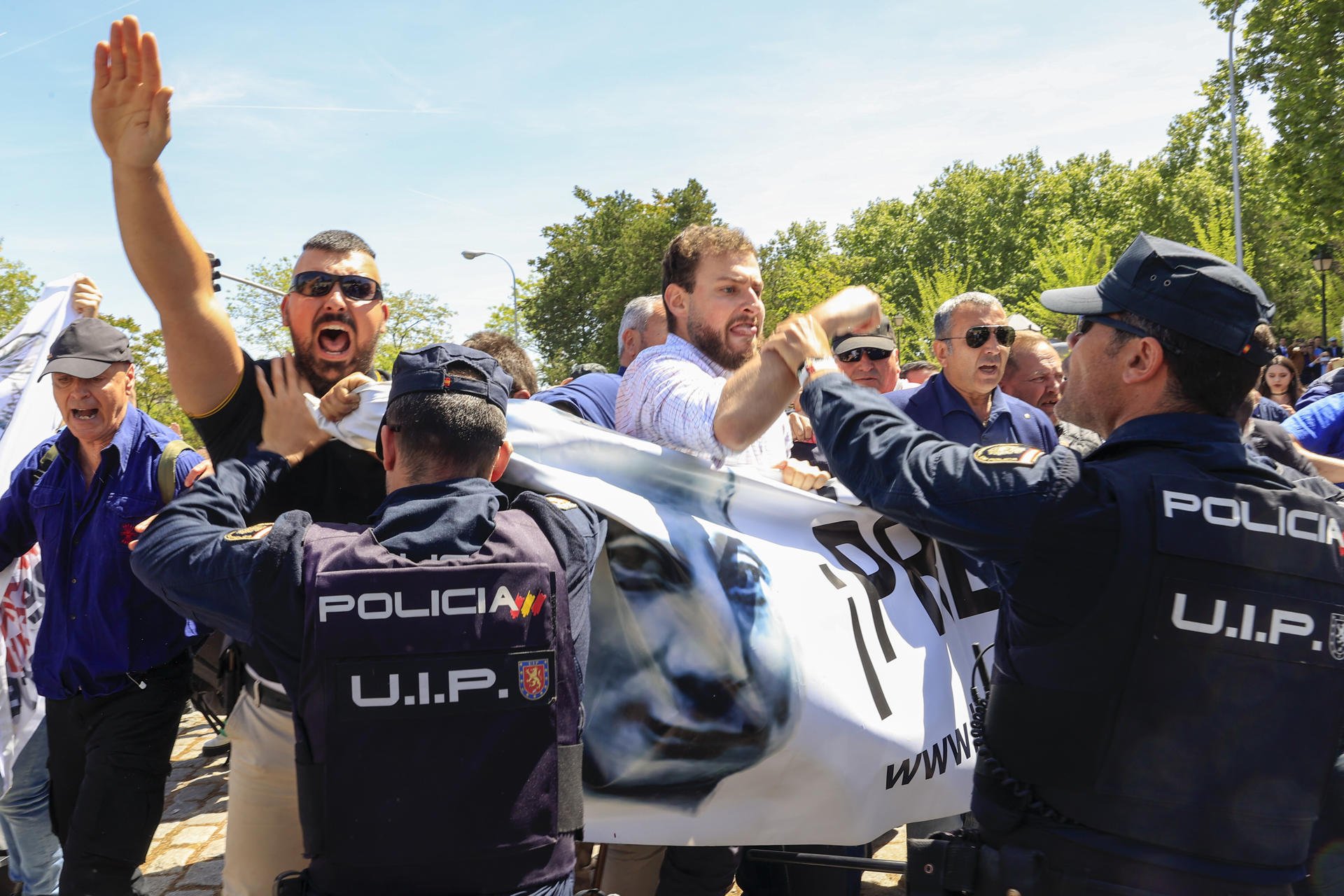A hundred supporters of the founder of Spanish fascism. They gathered this Monday at the gates of Madrid's San Isidro cemetery to honour the figure of José Antonio Primo de Rivera. Sixty-four years later, the remains of the Spanish Falange party founder are no longer buried in the place that the dictator Franco chose for him in the Valle de los Caídos ("Valley of the Fallen"), but have been cremated and buried in a cemetery in the Spanish capital's Carabanchel district. In his last journey through Madrid, he only received the support and admiration of a handful of fascists.
As the sun was just beginning to appear behind the mountains of the Madrid sierra, a car with a Spanish flag over its trunk was driving at full speed along the highway through the Cuelgamuros valley. "José Antonio, presente!" shouted the fascist driver as he sounded his horn and shattered the silence of the mountain landscape. Minutes later, at the gates of Valle de los Caídos, came the first arrivals wearing navy blue shirts with the distinctive symbol of yoke and arrows embroidered in red over the heart. Just as the body of Franco himself had been removed from the mausoleum three years ago, in compliance with the wishes of the current Spanish government to convert a monument glorifying Spain's fascist dictatorship into a "neutral" historical site, so the remains of its second most-famous occupant were also finally moved. Although, in this case, it was the family who finally carried out the process, and not the government.
The exhumation of José Antonio Primo de Rivera lasted around five hours. The funeral cortege entered the mausoleum around eight o'clock in the morning, and left carrying the Falangist's remains at a few minutes before 1pm. All this time to remove the slab covering the place where the founder of the Falange rested - until now - and for the eighty relatives and guests to hold a mass in his honour.
Shouts of "Arriba, España" and of praise to Primo de Rivera arrived just as the funeral procession was leaving Valle de los Caídos carrying the remains. They also threw five roses on the vehicle in honour of the lyrics of the fascist hymn Cara al Sol. At that time, there were about fifteen Falangists standing guard, along with journalists and Civil Guards, at the gates of the mausoleum. Fifty-five kilometres later, in Carabanchel, a hundred fascists eagerly awaited the arrival of Primo de Rivera.
So much so, that on arrival they rushed towards the hearse, passing roughly through the line of journalists and then physically confronting the police. The violent incidents ended with some broken media tripods. The Spanish police arrested three people who tried to break through the police cordon. The three arrests took place at the entrance to the San Isidro cemetery. Several people were also required to show ID. Among those present was, unsurprisingly, a man who was convicted in the 2013 Blanquerna case and is current National Leader of La Falange, Manuel Andrino.
Buried for the fourth time since his death
Primo de Rivera's family had long since made its request to the abbot of the Benedictine community of El Escorial and to the authorities of the Community of Madrid for the exhumation of the remains. Now, these are located with those of other family members.
It is the fourth time that the founder of the Falange has been buried since his death. José Antonio Primo de Rivera, who was the son of the 1920s Spanish military dictator, Miguel Primo de Rivera, was in jail in Alicante at the start of the Civil War in 1936. He was convicted of conspiracy and executed, and came to be regarded by Spanish fascists as a great martyr to their cause. After Franco's victory, his remains arrived at the Basilica of El Escorial in November 1939. When the Valle de los Caídos was inaugurated in 1959, dictator Francisco Franco invited José Antonio's family to move his remains to the mausoleum.

